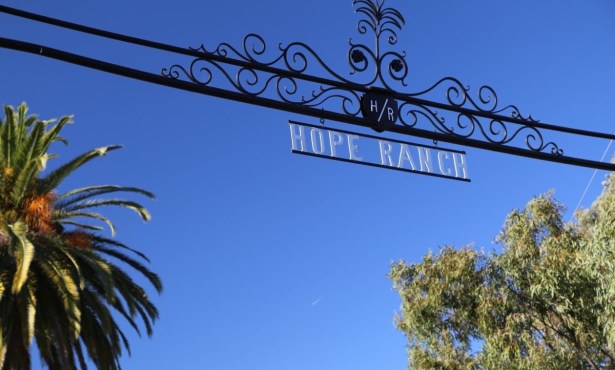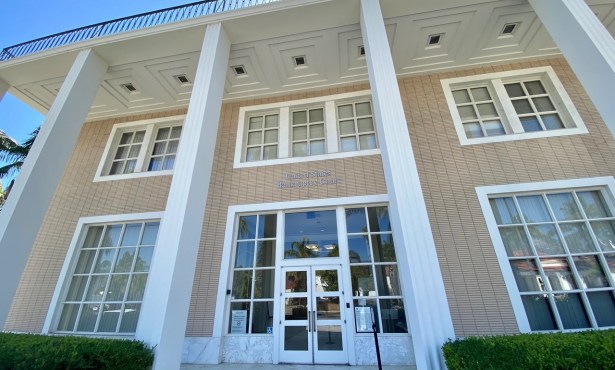Cottage, Sansum, CenCal, and Others to Pay Millions in Settlement over False Medi-Cal Claims
Latest Deal Involving Santa Barbara and S.L.O. Health-Care Providers Brings Total Settlement to $90.5 Million

In the past week, five major Santa Barbara and San Luis Obispo health-care providers, including Cottage, Sansum, and CenCal Health, settled a long-festering fraudulent billing case with the federal Department of Justice, the state Attorney General, and CenCal’s former medical director Dr. Julio Bordas — the case’s whistleblower — for $68 million. Late last December, Dignity Health in Santa Maria and two hospitals in S.L.O. settled the same set of allegations for a combined $22.5 million, bringing the total settlement to $90.5 million.
Bordas alleged in his initial complaint that CenCal — the county organized health system that arranges services for Medi-Cal enrollees in Santa Barbara and San Luis Obispo counties — concocted a fraudulent scheme to make large lump-sum payments to these six medical institutions rather than return excess funds earmarked under the Affordable Care Act to expand Medi-Cal insurance coverage to the poorest of the poor. Under this new program — which Bordas stated expanded Medi-Cal eligibility to 40,000 Santa Barbara and San Luis Obispo residents in 2014 — CenCal was obligated to return 85 percent of all payments received but not spent on this expanded treatment. This amount, Bordas claimed in his initial lawsuit filed in 2018, amounted to “tens of millions of dollars.”
The federal Department of Justice announced last December it intended to intervene in the case, acting as the lead prosecutor. It was then that Dignity Health, which owns Santa Maria’s Marian Hospital, settled. This past week, CenCal agreed to pay the feds $49.5 million, Community Health Centers $3.15 million, Cottage $9 million, and Sansum $4.5 million. In addition, California will be paid a total of $1.85 million.
CenCal, Cottage, and Sansum issued press statements acknowledging the settlements but disputing the charges against them and the validity of the claims. “CenCal disagrees with the government’s position; we believe these past disbursements to providers under this program were lawful and proper and made in good faith within the context of minimal regulatory guidance.”
CenCal CEO Marina Owen added later, “This was a matter of a lack of regulatory guidance at a time when the number and cost of newly insured individuals was unknown. Local program providers felt caught in the middle” between the state and the federal government. There were 16,000 new Medi-Cal enrollees with long histories of chronic under-treatment; it was not clear what treatments were covered and which were not. Owen said the program CenCal adopted had been approved by both the state and federal health-care agencies. The threat of triple damages loomed large if the federal lawsuit prevailed.
As a whistleblower under the False Claims Act, Bordas is entitled to $12.56 million. Owen said she heard from prior CenCal administrators that Bordas did not raise concerns at the time about the “surplus” payments made to the large providers.
This is in stark contrast to what Bordas, who was director from 2012 to 2015, alleged in his complaint. His lawsuit stated CenCal administrators were so alarmed by the large discrepancy between the revenues coming in and the actual bills incurred by those targeted for expanded coverage that they held weekly administrator meetings to figure out ways to not to return the money. Part of that strategy, Bordas charged, was to retroactively funnel those funds to the six major providers well before the programs even existed for which the charges were being levied.
Sansum and Cottage also issued statements disputing these assertions. “Sansum disagrees with the government’s claims and we do not believe it was an overpayment or that Sansum did anything wrong or inappropriate,” stated Sansum CEO Kurt Ransohoff. “We decided to settle this matter and return the alleged over-payments instead of engaging in costly, time-consuming litigation.”
Last October, the county and its Department of Behavioral Wellness settled a similar complaint filed by the Department of Justice amounting to $28 million.
CORRECTION: In an earlier version of this story, it was asserted that the settlement entered into by the feds and Santa Barbara County’s Department of Behavioral Wellness for $28 million had been covered by funds from the federal American Rescue Plan dollars. That is not precisely accurate. ARPA funds cannot be used for such purposes. Of that settlement, $17 million came from the General Fund’s capital reserve fund that had been earmarked for the county’s Public Safety Radio Network project. The county used $17 million in ARPA funds to backfill those General Fund revenues so the project could proceed; the remaining $9 million came from the county’s litigation reserve amount.



